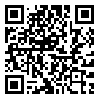BibTeX | RIS | EndNote | Medlars | ProCite | Reference Manager | RefWorks
Send citation to:
URL: http://hayat.tums.ac.ir/article-1-64-en.html
2- MSc. in Nursing, Dept. of Pediatric Nursing, School of Nursing and Midwifery, Lorestan University of Medical Sciences, Lorestan, Iran
3- Dept of Biostatistics, Lorestan University of Medical Sciences, Lorestan, Iran
Background & Aim: Provision of essential information to patients is essential in medical services. However, results of patient education surveys show that medical personnel&aposs perceptions may not align with those of patients about educational needs. This study was carried out to determine and compare educational priorities between patients and medical personnel.
Methods & Materials: In this cross-sectional study, 69 patients with epilepsy, and 85 medical personnel (physicians and nurses) working in neurology, neurosurgery and pediatrics units were recruited. Data were gathered using a questionnaire consisting of three subsets with a total of 28 items. Data were analyzed with descriptive statistics and one-way ANOVA.
Results: More patients (58.2%) were male. Mean age was 30.8 years. Mean ages of nurses and doctors were 29.8 and37.8 years, respectively. Mean score of items regarding the disease in patients group was significantly higher than the medical personnel (P=0.00). Mean score of items about life style was higher in patients and nurses than the doctors (P=0.001). There were no significant differences about informational priorities of the drug therapy subset between three groups (P=0.53).
Conclusion: Education needs assessments should be done by considering patients&apos educational priorities in order to meet their educational needs.
| Rights and permissions | |
 |
This work is licensed under a Creative Commons Attribution-NonCommercial 4.0 International License. |





